- Startup Spells 🪄
- Posts
- A 3-Page Priming Paywall Flow That 3x'd LTV (Data from a 14 Day A/B Test)
A 3-Page Priming Paywall Flow That 3x'd LTV (Data from a 14 Day A/B Test)
PLUS: After Closing 4000+ Sales, I Discovered a New Method to Close Deals Faster
A 3-Page Priming Paywall Flow That 3x'd LTV (Data from a 14 Day A/B Test)
In the world of mobile app monetization, minor tweaks to UX and messaging can generate massive changes in performance metrics.
Two real-world A/B tests illustrate how thoughtful framing and a user-first approach can lead to outsized gains in trial starts, conversions, and long-term retention.
In this test, users saw a three-step sequence before the paywall:
A 7-day free trial pitch
A message promising to remind them two days before the trial ends
The actual paywall screen
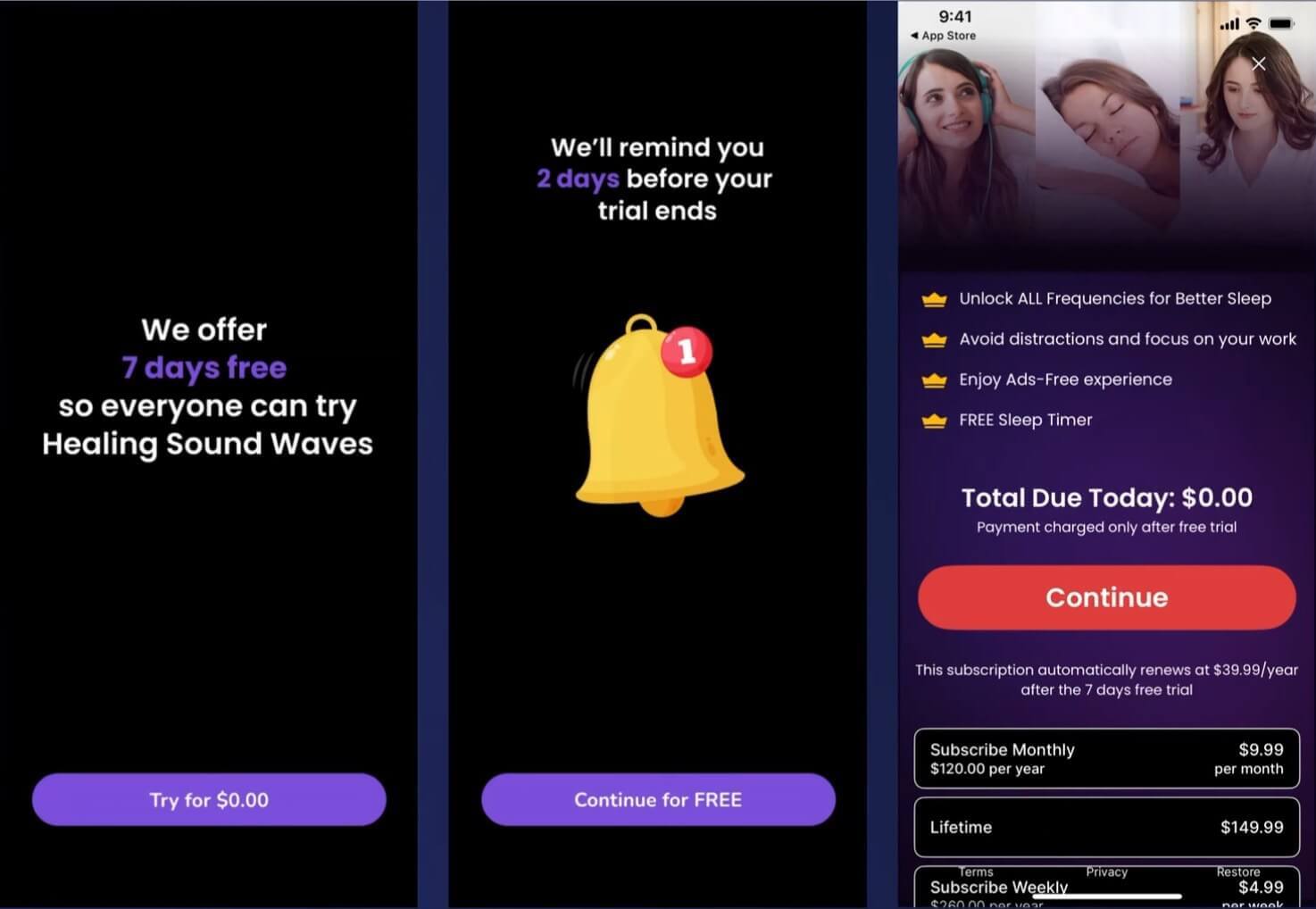
3-page priming paywall UI
This upfront transparency reframed the decision, making users feel safer to proceed.
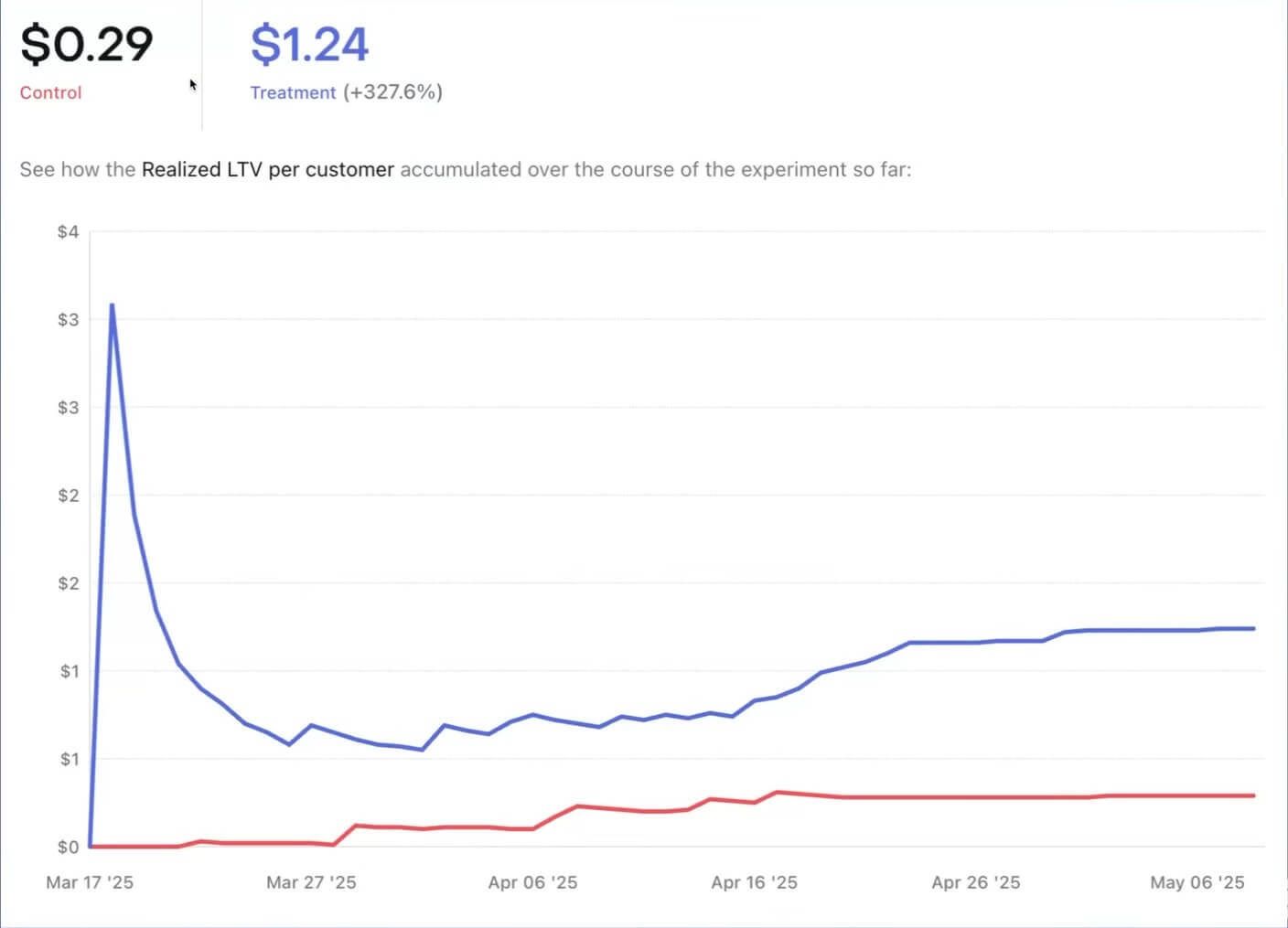
3-page priming paywall A/B test
The results were dramatic:
+72% increase in trial starts
+180% increase in paid conversions
+327% lift in customer lifetime value (LTV)
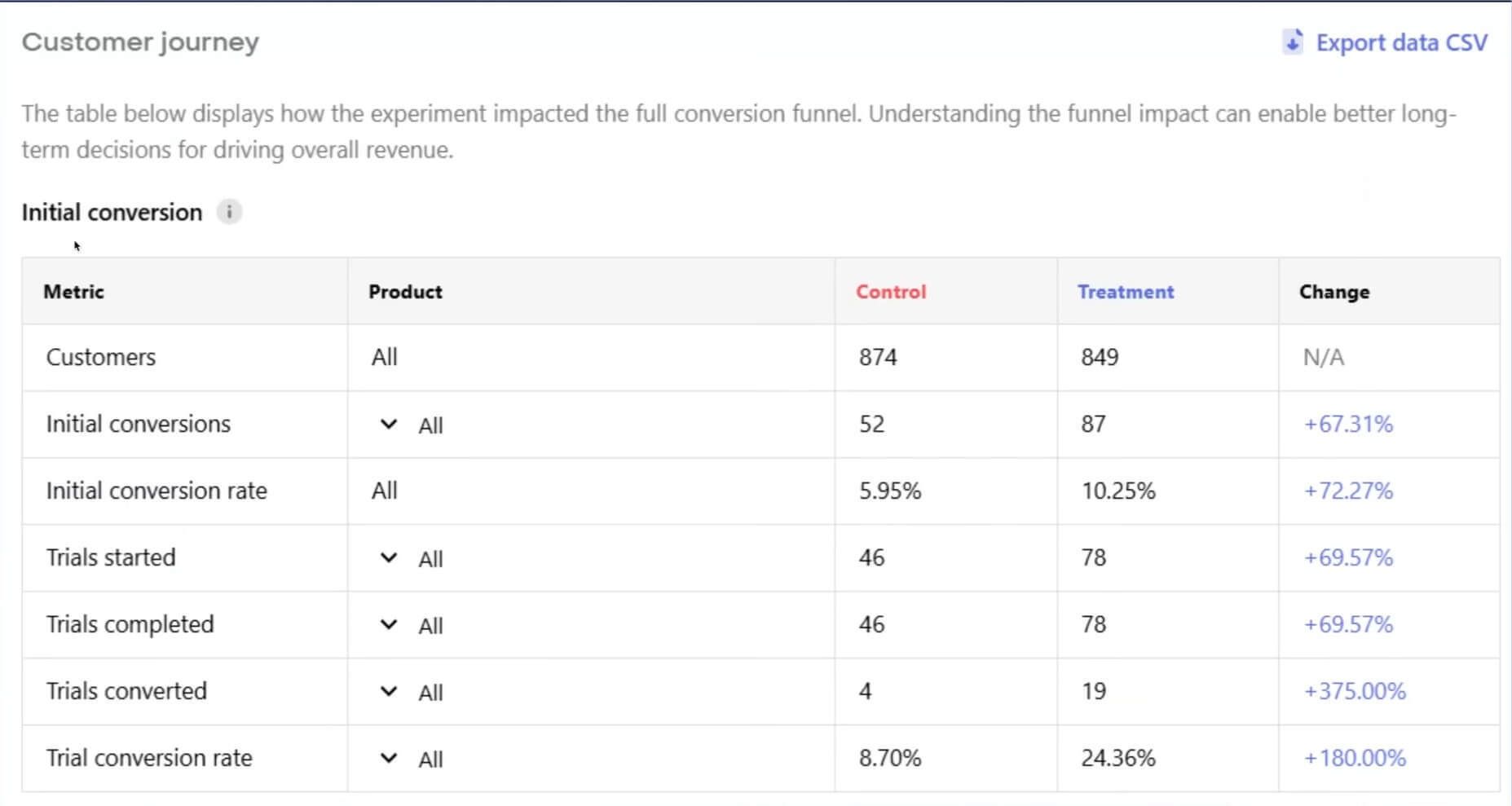
Customer journey insights
The fear of being charged unexpectedly often deters users. By signaling that they could cancel in time—and would be reminded—the app removed friction and boosted both trust and performance.
A Clever Click-Wheel UI Lost to Plain, Purposeful Navigation
Another experiment compared two UI treatments:
Treatment A: A nostalgic "click-wheel" interface that felt unique and clever.
Treatment B: A standard homepage layout with clear goals like "Sleep," "Focus," and "Relax."
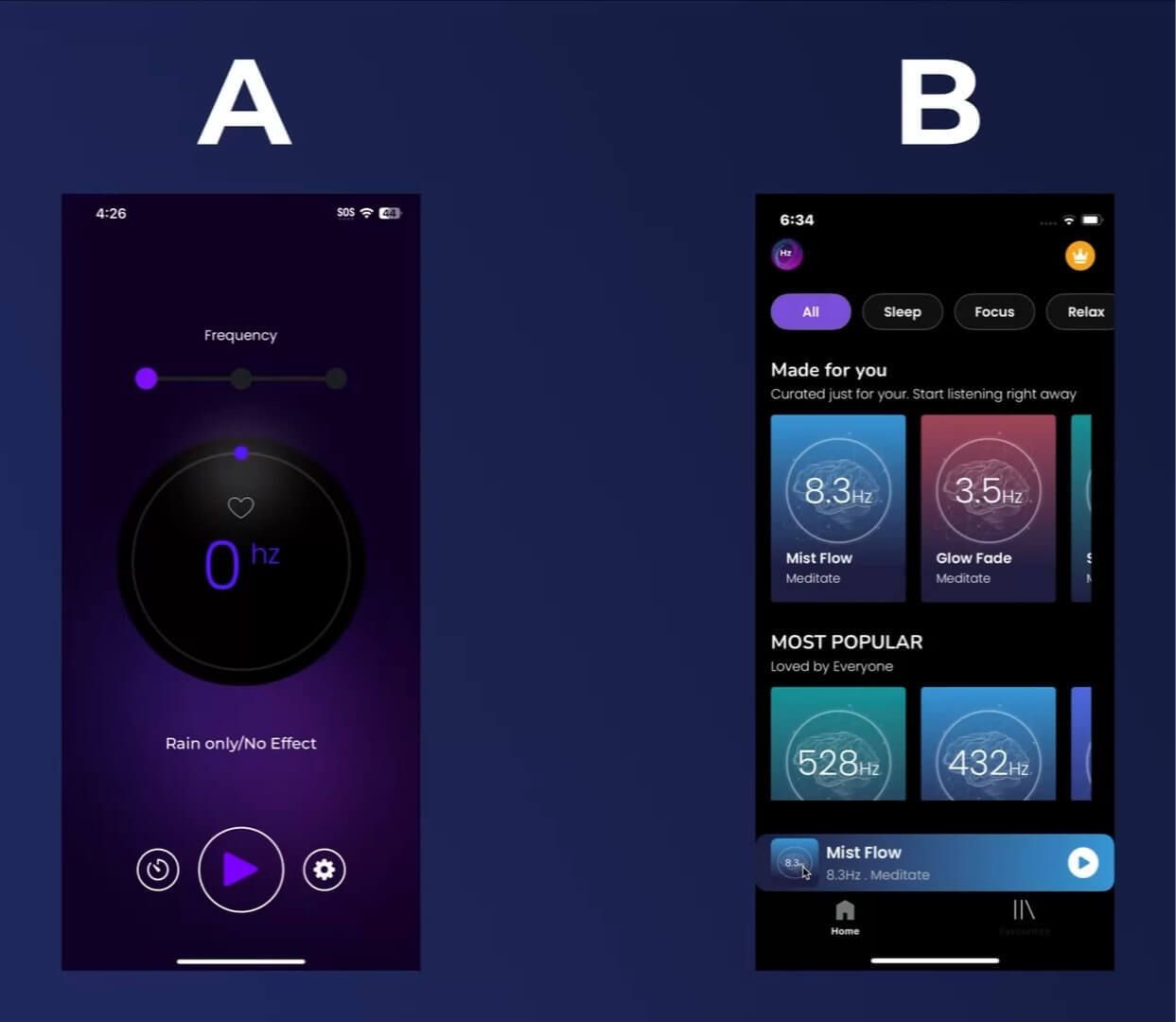
Clever vs Clear A/B test UI
While the clever UI initially captured attention, it created cognitive friction. The clearer design made it easier for users to find what they wanted and return consistently:
Treatment B led to higher retention over the first 7 days
It also increased average session length from 1.2 to 1.6 after the release of Version B around April 20th, indicating more value per visit
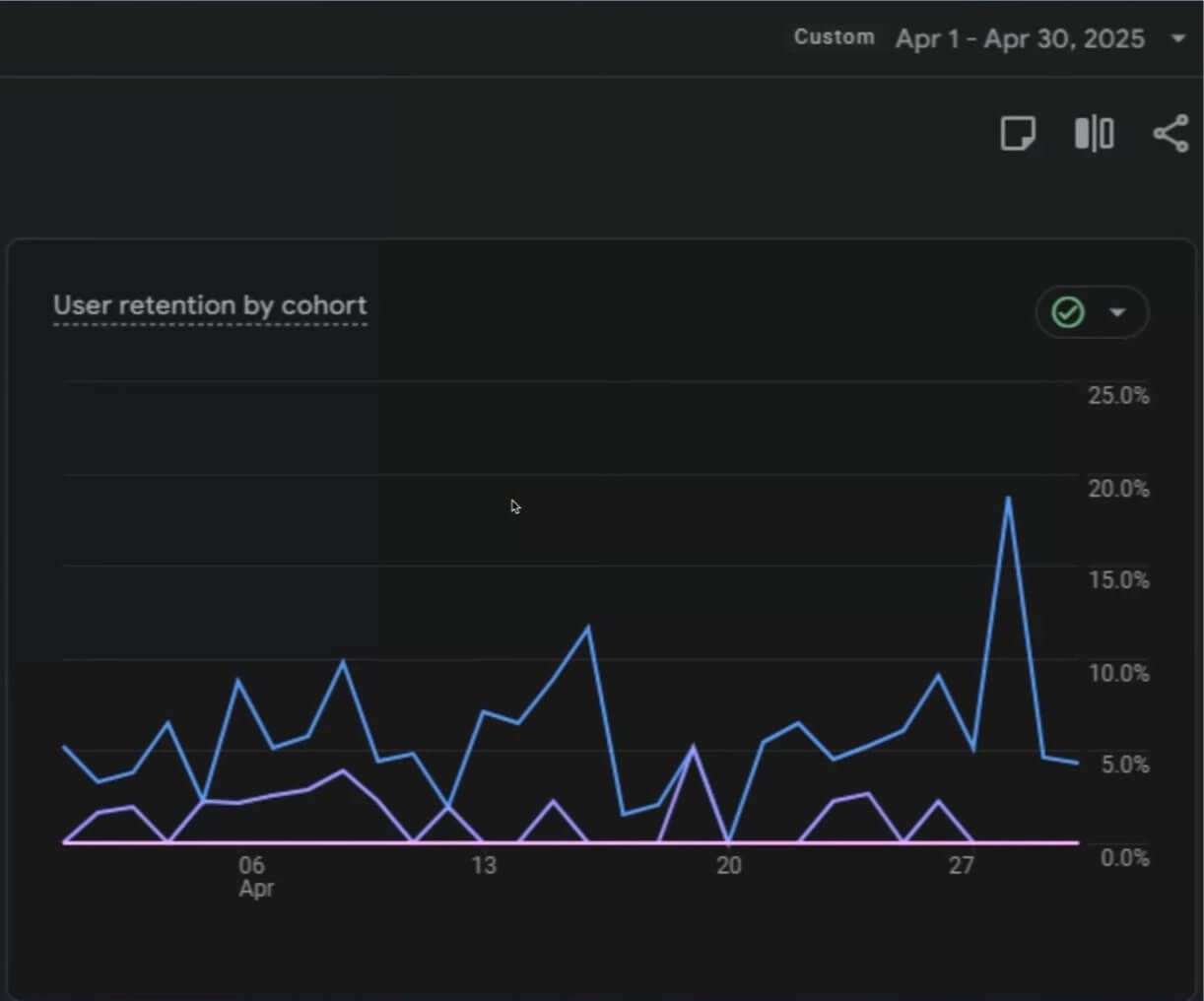
Retention Impact of Clever vs Clear
Clarity isn’t just about aesthetics—it’s about mental ease. Users stay longer when they instantly understand how to get what they want.
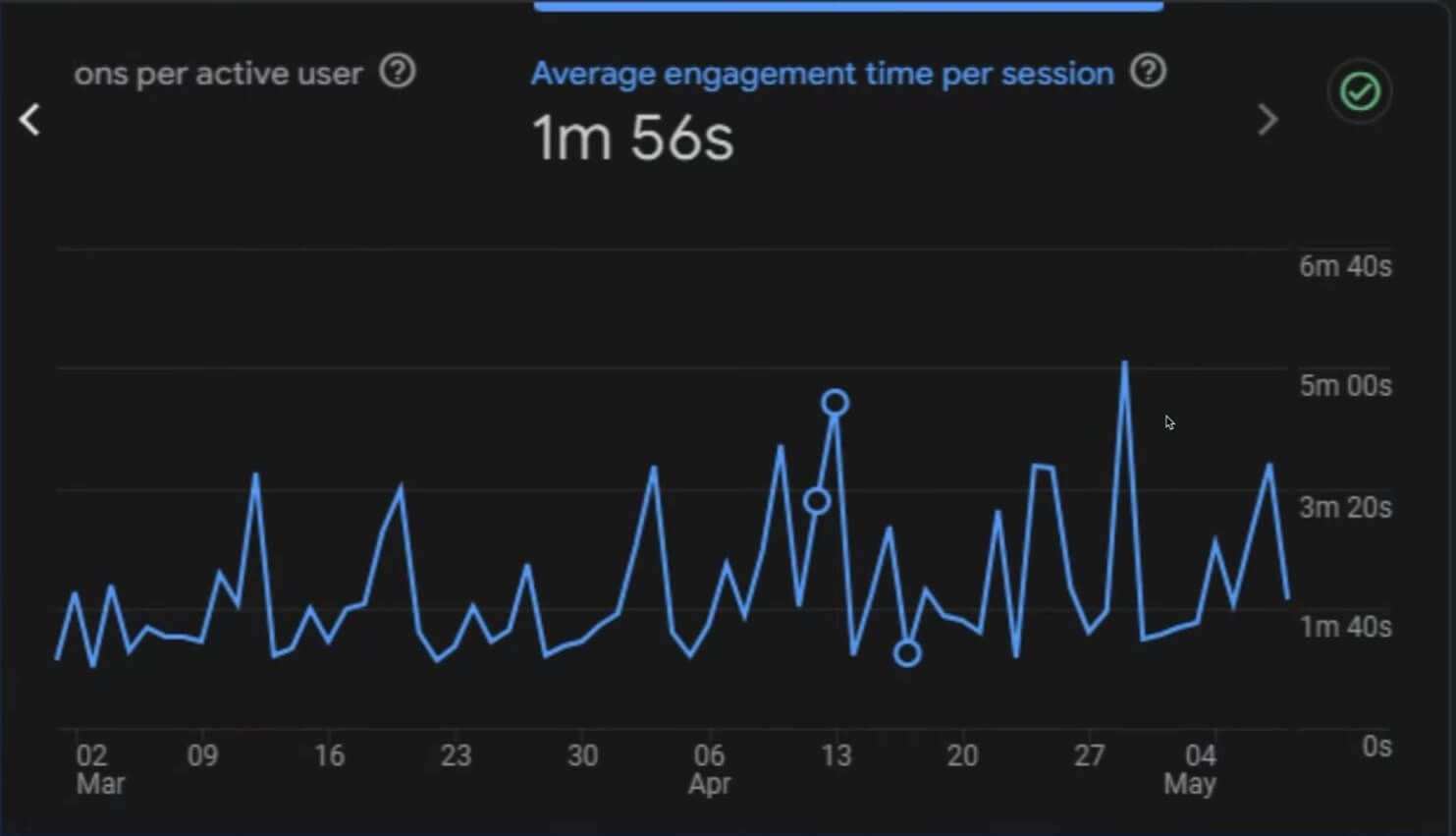
Average Engagement Time per Session
How Personalization and Onboarding Data Fueled Repeat Use
The app introduced a "Made for You" section, automatically populated based on onboarding data like user-selected goals or listening preferences.
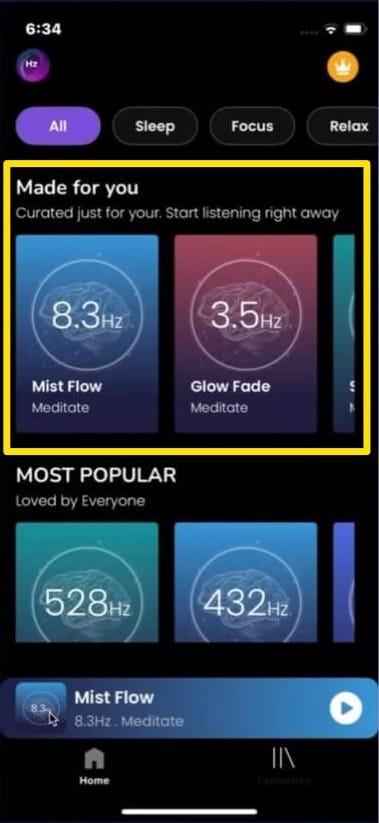
Made for You
This personalized recommendation hub drove sustained engagement:
Users were 2.3x more likely to return within a week
The section helped surface lesser-used content, expanding perceived value
When an app feels tailor-made, users treat it like a habit—not a trial.
The idea for the redesign came directly from reading user reviews. Users were explicitly stating that they had problems (e.g., trouble sleeping, lack of focus) and needed help finding the right frequency, but the old design made them search for it.
The new design directly addressed this user feedback by organizing content around solutions. This reinforces the principle that listening to users is a direct path to improving engagement and retention.
RevenueCat, Fast Iteration, and Avoiding False Positives
Fast iteration wasn’t just a process advantage—it was a strategic edge. Using RevenueCat, the team ran rapid A/B tests with reliable attribution across multiple platforms. This allowed them to:
Validate hypotheses within days instead of weeks
Detect winners early and avoid scaling false positives
However, one major lesson: Context matters.
The paywall priming test that worked for an annual subscription actually reduced conversion when applied to a weekly plan. Learning: always test pricing strategy changes by plan type.
Additionally, scaling learnings across a portfolio of apps requires caution. Each app has unique audiences and behavioral patterns. The best teams don’t just copy-paste winners—they validate them again.
These tests reveal a core truth: users don’t resist paying—they resist feeling manipulated. When companies lead with clarity, frame offers with empathy, and test with discipline, the results speak for themselves.
Hat Tip to Steve Young for the insight.
Top Tweets of the day
1/
AWS is announcing a direct competitor to Browserbase tomorrow.
We're not worried. It's lacking everything that makes Browserbase great.
But three months ago AWS ambushed us with a "partnership meeting" to try steal our secrets. We saw right through it.
Keep your guard up.
— Paul Klein IV (@pk_iv)
6:07 PM • Jul 15, 2025
I was re-watching Silicon Valley (TV Show) just for giggles and I noticed Erlich Bachman having a word for this: Brainrape.
AWS was trying to brainrape BrowserBase founders:
Their questions were:
"Who are your biggest customers and why do they use you?"
"What are the unique technical approaches you've taken that give Browserbase an advantage"
"What is your roadmap, and can you be specific about why each item is important?"
2/
POV: running cheap ads on pornhub will make you rich
> guilt trip the gooners
> tell them how they can be better with your AI fitness app
> get em off the hub
> print money
— Rohan Dave (@rohandave_)
7:11 PM • Jul 15, 2025
Self-improvement apps on Cornhub are getting 8x ROAS compared to 2x ROAS for Meta without any targetting, just creative and storytelling.
One quote-tweet I loved: "Religion has been using guilt for thousands of years. It works. Can’t wait to see churches advertising on Cornhub."
It makes sense since such places have solved the most hardest problem any startup has: Distribution.
3/
this is the ENTIRE playbook on how @cluely generated over 92 million organic views today about our product
we’re going to scale to a billion views with this method so feel free to copy us if you wish :)
— Daniel Mints (@daniel_mints)
9:20 AM • Jul 15, 2025
If you do mobile apps, copy Cluely's marketing strategy. You can't pay as much as them to USA-based UGC creators but the world has many top-UGC creators who don't cost as much but still got the charisma.
Focus Tree uses this strategy and gets results like Cluely but they move in silence since their product isn't as controversial.
Rabbit Holes
After Closing 4000+ Sales, I Discovered a New Method to Close Deals Faster by Alex Hormozi
How to Create Your Own AI Influencer and Make Money From Them by Traffic Cardinal
How and When to Use Sex to Sell More by Peep Laja
What’d ya think of today’s newsletter? Hit ‘reply’ and let me know.
Do me a favor and share it in your company's Slack #marketing channel.
First time? Subscribe.
Follow me on X.
More Startup Spells 🪄
Perspective Funnels' Marketing Playbook: Turn €250K/Month Ads Into Profit in 7 Days with Mobile-First, AI-Funnels (LINK)
Marketing Genius of Spotify Wrapped (LINK)
Cameo’s B2B Growth Playbook: How Product-Led Marketing, Reaction Videos and Influencer Strategy Drove Virality (LINK)
Engineer Word-of-Mouth Virality in the Age of Algorithms (LINK)
Reply